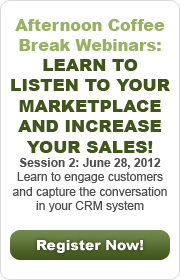With the internet and other technology breaking down international borders, doing business globally is no longer reserved for multinational titans like Microsoft or Proctor & Gamble. Small and mid-sized businesses have been expanding their reach and tapping international markets for years. But new global opportunities can also present challenges when it comes to accounting for foreign currency transactions. So let’s take a look at how Sage Accpac helps you tackle those challenges with Multi-Currency Processing capabilities.
The Challenge
When companies that use different currencies transact business, at least one of the companies will have to translate a foreign currency to its home currency. But as you probably know, the value of currencies are always changing. This can create an administrative nightmare when it comes to properly valuing payables, preparing financial reports, and ultimately settling the transactions and posting to your general Ledger.
All Currencies Are Welcome
From Pesos and Pounds to Euros and Yen, Sage Accpac Multi-Currency provides automated currency conversion making it simple to participate in the international marketplace. It also saves time and eliminates redundancy by allowing you to maintain an unlimited number of currencies and rate types. That means you enter the data once, then let Sage Accpac Multi-Currency processing handle the rest through the power of automation.
Using Foreign Currency Extended Solution
With Multi-Currency processing for Sage Accpac, you can:
- Enter transactions in multiple currencies and print reports in either functional or source currency
- Process payments and receipts in the currency of your customers and vendors
- Restate outstanding currency
- Control how you record gains and losses, selecting from the Recognized Gain/Loss Accounting Method or the Unrealized Gain/Loss Accounting Method for each company
Competing in the Global Marketplace
Competing for business in the global marketplace is challenging enough without the added hassle of manually tracking currency rate fluctuations, revaluations, and managing gains & losses. But with Sage Accpac Multi-Currency, you’ll have the right tool to automate the process and get the job done smoothly and accurately.
Contact us if you’d like to learn more about using Multi-Currency processing for Sage Accpac ERP.



 Download our corporate brochure for more facts about us, our
clients and our solutions.
Download our corporate brochure for more facts about us, our
clients and our solutions.
 Driving Revenue Growth 1
Driving Revenue Growth 1 Satisfying Customers 1
Satisfying Customers 1